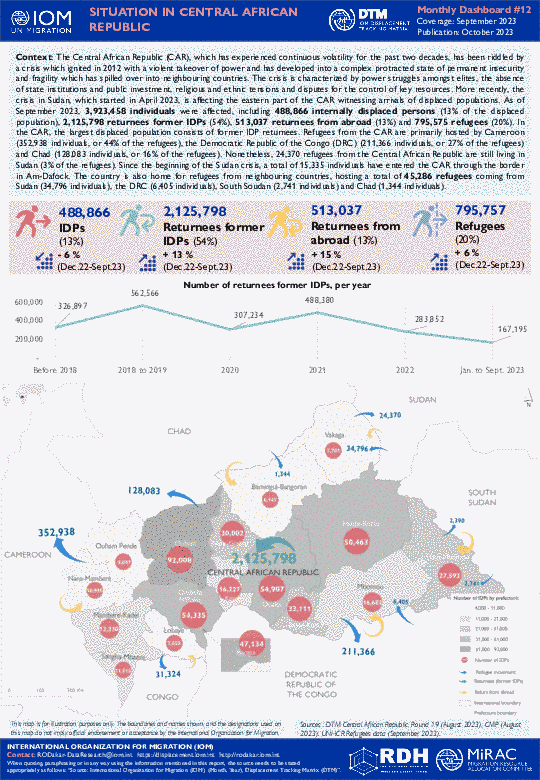-
Countries
-
Data and Analysis
-
Special Focus
-
Crisis Responses
West and Central Africa — Central African Republic Situation Monthly Dashboard 12 (September 2023)
The Central African Republic (CAR), which has experienced continuous volatility for the past two decades, has been riddled by a crisis which ignited in 2012 with a violent takeover of power and has developed into a complex protracted state of permanent insecurity and fragility which has spilled over into neighbouring countries. The crisis is characterized by power struggles amongst elites, the absence of state institutions and public investment, religious and ethnic tensions and disputes for the control of key resources. More recently, the crisis in Sudan, which started in April 2023, is affecting the eastern part of the CAR witnessing arrivals of displaced populations. As of September 2023, 3,923,458 individuals were affected, including 488,866 internally displaced persons (13% of the displaced population), 2,125,798 returnees former IDPs (54%), 513,037 returnees from abroad (13%) and 795,575 refugees (20%). In the CAR, the largest displaced population consists of former IDP returnees. Refugees from the CAR are primarily hosted by Cameroon (352,938 individuals, or 44% of the refugees), the Democratic Republic of the Congo (DRC) (211,366 individuals, or 27% of the refugees) and Chad (128,083 individuals, or 16% of the refugees). Nonetheless, 24,370 refugees from the Central African Republic are still living in Sudan (3% of the refugees). Since the beginning of the Sudan crisis, a total of 15,335 individuals have entered the CAR through the border in Am-Dafock. The country is also home for refugees from neighbouring countries, hosting a total of 45,286 refugees coming from Sudan (34,796 individuals), the DRC (6,405 individuals), South Soudan (2,741 individuals) and Chad (1,344 individuals).

